#african american cinema
Text

GANJA AND HESS was the only American film screened during Critic’s Week at the 1973 Cannes Film Festival, where it was named one of the 10 Best American Film of the Decade. It opened at Manhattan’s Playboy Theater a few weeks later. “The first time I saw the movie was at the opening-night screening in New York,” Clark reveals. “There was a splashy party afterward -- and being the lead actress, I was pretty much the star of the party! Nothing like that had ever happened to me before. It was wonderful.” The bubble burst the next day, however, when almost every New York critic panned the film. “When I read the reviews, I thought, ‘They didn’t get it,’” Clark remembers. “Many critics believe that black people make very straightforward, literal movies -- so Bill was really an enigma to them. They just did not understand what he had done.”
Gunn’s unique cinematic treatment of African-American spirituality and vampirism was also lost on the film’s distributor, Kelly-Jordan Enterprises. After a one-week run in Manhattan, the 110-minute version was pulled from circulation and replaced by a 76-minute bastardization called BLOOD COUPLE, with new credits listing “E.H. Novikov” (a pseudonym for film doctor Fima Noveck) as director. For nearly 25 years, it was this version that viewers were subjected to, both in theaters and on video, under such misleading titles as DOUBLE POSSESSION, BLACK EVIL, BLACK VAMPIRE, and BLACKOUT: THE MOMENT OF TERROR. "It never found much of an audience," Clark says, "but a number of industry people saw it, especially in New York, so I was offered some other movies."

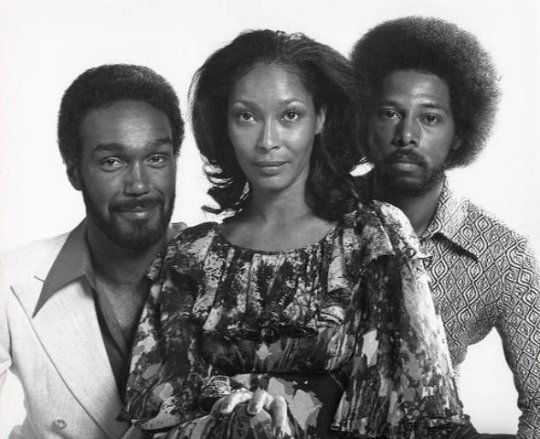

Temple of shock, January 20 2011, Slinking Through the Seventies: An Interview with Marlene Clark, an expanded and revised interview by Chris Poggiali that originally appeared in Fangoria #191 (April 2000)
#marlene clark#ganja & hess#bill gunn#1973#1970s#interview#not caps#film#horror#black horror#african american cinema#external source#tag review#ganja and hess
12 notes
·
View notes
Text


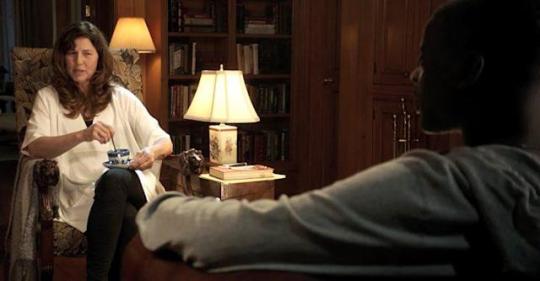
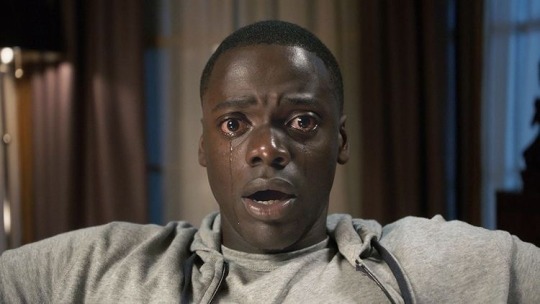

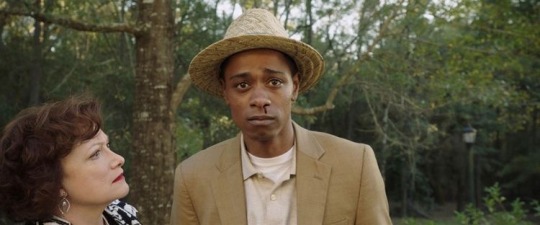



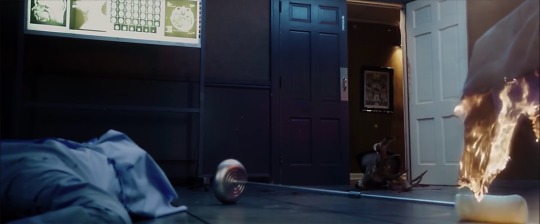



Get Out - dir. Jordan Peele - (2017)
#jordan peele#get out#movie#daniel kaluuya#allison williams#cinema#film#2017#2010s cinema#2010s#bradley whitford#lakeith stanfield#catherine keener#lil rel howery#african american#african american cinema
6 notes
·
View notes
Link
While looking through a box of unidentified film reels in 2017, Dino Everett, a film archivist from the University of Southern California, did not expect to unfurl a section of film showing a Black couple dressed in costumes typical of minstrel shows locked in a romantic embrace. The short, only 20 seconds long, showed the pair kissing, swaying, kissing again and just smiling at each other. Everett had rediscovered a lost moment in film history
#film#black history#african american history#film history#movies#19th century#black cinema#Louise Beavers#Oscar Micheaux
97 notes
·
View notes
Photo

Wipe transition from Deep Cover (Bill Duke, 1992), edited by pioneering film editor John Carter, at that time 70 years old!
The craziest technique you’ve seen in a minute, right?
#Deep Cover#Bill Duke#John Carter#editing#wipe#wipe transition#film transition#filmmaking#90s movies#montage#film noir#neo noir#laurence fishburne#jeff goldblum#black cinema#african-american film#film editing#editing technique#film#cinema
104 notes
·
View notes
Text
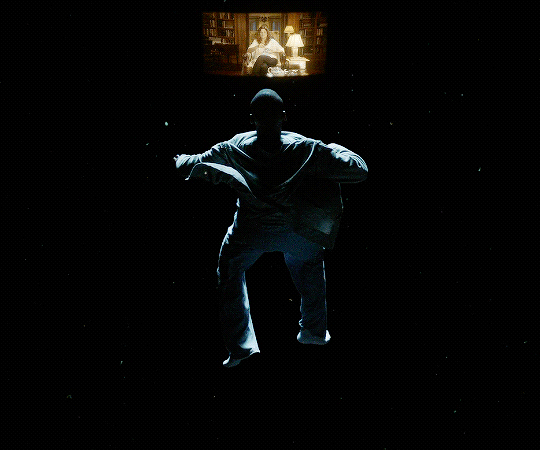
#get out#get out gif#movie#Jordan Peele#Daniel Kaluuya#Chris Washington#movie gif#loop gif#hipnosis#racism#neurosurgeon#abduction#brain surgery#satire#metaphors#african american#photograph#films#cinema#revenge#kidnapping#manipulation#betrayal#racial conflict#paranoia#nightmare#immortality
10 notes
·
View notes
Link
From celebrated writer and film historian Elvis Mitchell, IS THAT BLACK ENOUGH FOR YOU?!? is both a documentary and deeply personal essay. The film examines the craft and power of cinema from a perspective often overlooked: the African American contribution to films released from the landmark era of the 70s. It is a deep dive into the impact that point of view had on movies, as well as popular culture, and serves as a love letter to film, posing questions that have never been asked, let alone answered.
#black cinema#film#movies#african american#black history#is that black enough for you#elvis miitchell
4 notes
·
View notes
Text
Unpacking the Layers: The Societal Reflections in Spike Lee's 'Do the Right Thing'
Few films stand as boldly and poignantly as Spike Lee‘s masterwork, “Do the Right Thing.” Set against the sweltering backdrop of a Brooklyn neighborhood, Lee’s film is not just a narrative; it’s a mirror reflecting the intricate complexities of racial tensions, social injustices, and the simmering undercurrents of African American culture.
Released in 1989, “Do the Right Thing” remains as…
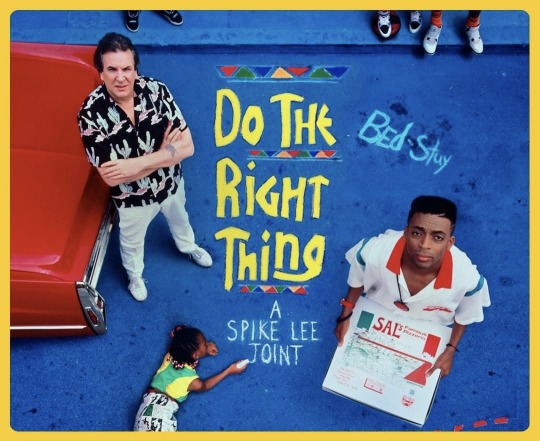
View On WordPress
#African American Culture#Cinema#Do the Right Thing#racial tensions#Social Justice#societal reflections#Spike Lee
0 notes
Text
Dinosaurs in the Hood
Danez Smith
Let’s make a movie called Dinosaurs in the Hood.
Jurassic Park meets Friday meets The Pursuit of Happyness.
There should be a scene where a little black boy is playing
with a toy dinosaur on the bus, then looks out the window
& sees the T. Rex, because there has to be a T. Rex.
Don’t let Tarantino direct this. In his version, the boy plays
with a gun, the metaphor: black boys toy with their own lives,
the foreshadow to his end, the spitting image of his father.
Fuck that, the kid has a plastic Brontosaurus or Triceratops
& this is his proof of magic or God or Santa. I want a scene
where a cop car gets pooped on by a pterodactyl, a scene
where the corner store turns into a battle ground. Don’t let
the Wayans brothers in this movie. I don’t want any racist shit
about Asian people or overused Latino stereotypes.
This movie is about a neighbourhood of royal folks —
children of slaves & immigrants & addicts & exiles — saving their town
from real-ass dinosaurs. I don’t want some cheesy yet progressive
Hmong sexy hot dude hero with a funny yet strong commanding
black girl buddy-cop film. This is not a vehicle for Will Smith
& Sofia Vergara. I want grandmas on the front porch taking out raptors
with guns they hid in walls & under mattresses. I want those little spitty,
screamy dinosaurs. I want Cicely Tyson to make a speech, maybe two.
I want Viola Davis to save the city in the last scene with a black fist afro pick
through the last dinosaur’s long, cold-blood neck. But this can’t be
a black movie. This can’t be a black movie. This movie can’t be dismissed
because of its cast or its audience. This movie can’t be a metaphor
for black people & extinction. This movie can’t be about race.
This movie can’t be about black pain or cause black people pain.
This movie can’t be about a long history of having a long history with hurt.
This movie can’t be about race. Nobody can say nigga in this movie
who can’t say it to my face in public. No chicken jokes in this movie.
No bullets in the heroes. & no one kills the black boy. & no one kills
the black boy. & no one kills the black boy. Besides, the only reason
I want to make this is for that first scene anyway: the little black boy
on the bus with a toy dinosaur, his eyes wide & endless
his dreams possible, pulsing, & right there.
0 notes
Text
masterpost of horror lists
here are all my horror lists in one place to make it easier to find! enjoy!
sub-genres
action horror
analog horror
animal horror
animated horror
anthology horror
aquatic horror
apocalyptic horror
backwoods horror
campy horror
cannibal horror
children’s horror
comedy horror
coming-of-age horror
corporate/work place horror
cult horror
dance horror
dark comedy horror
daylight horror
death games
domestic horror
ecological horror
erotic horror
experimental horror
fairytale horror
folk horror
found footage horror
giallo horror
gothic horror
grief horror
historical horror
holiday horror
home invasion horror
house horror
indie horror
isolation horror
insect horror
lgbtqia+ horror
lovecraftian/cosmic horror
medical horror
meta horror
monster horror
musical horror
mythological horror
neo-monster horror
new french extremity horror
paranormal horror
political horror
psychedelic horror
psychological horror
religious horror
revenge horror
romantic horror
dramatic horror
science fiction horror
slasher
southern gothic horror
splatter/body horror
survival horror
techno-horror
vampire horror
virus horror
werewolf horror
western horror
witch horror
zombie horror
horror plots/settings
road trip horror
summer camp horror
cave horror
doll horror
cinema horror
cabin horror
clown horror
plot devices
storm horror
from a child’s perspective
final girl/guy (this is slasher horror trope)
last guy/girl (this is different than final girl/guy)
reality-bending horror
slow burn horror
foreign horror or non-american horror
african horror
spanish horror
middle eastern horror
korean horror
japanese horror
british horror
german horror
indian horror
thai horror
irish horror
scottish horror
slavic horror (kinda combined a bunch of countries for this)
chinese horror
french horror
australian horror
canadian horror
decades
silent era
30s horror
40s horror
50s horror
60s horror
70s horror
80s horror
90s horror
2000s horror
2010s horror
2020s horror
companies/services
blumhouse horror
a24 horror
ghosthouse horror
shudder horror
other lists
horror literature to movies
techno-color horror movies
video game to horror movie adaption
video nasties
female directed horror
my 130 favorite horror movies
horror movies critics hated because they’re stupid
horror remakes/sequels that weren’t bad
female villains in horror
horror movies so bad they’re good
non-horror movies that feel like horror movies
directors + their favorite horror movies + directors in the notes
tumblr’s favorite horror movie (based off my poll)
horror movie plot twists
cult classic horror movies
essential underrated horror films
worst horror movie husbands
religious horror that isn’t christianity
black horror movies
extreme horror (maybe use this as an avoid list)
24K notes
·
View notes
Text
Black Women in Media (2019)
The following are statistics on black women's representations in films and television series that came out in 2019.
Here's a link to the full report for more insight on these figures.
Also, see my post on going Beyond Face Value.





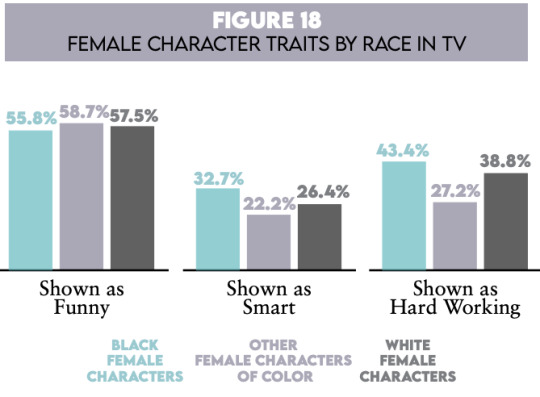


Once again, I encourage taking a look at the full report.
#I honestly encourage reading the full report and making sense of the figures#it’s pretty comprehensive#that said#always be wary of figures#blackontelevision#black tumblr#black sitcoms#black cinema#black media#african american#farfromhome999#Bonus
0 notes
Text

Will Smith as Mike Lowery
Martin Lawrence as Marcus Burnett
“Bad Boys” 📼
© 1995 Sony/ Columbia Pictures/ Bruckheimer-Simpson Films/ Columbia Tristar Home Video
Directed by Michael Bay (also known for 2001’s “Pearl Harbor”; 1996’s “The Rock”; 1998’s “Armageddon”; 2008’s “Transformers”)
#action movies#90s nostalgia#1995#bad boys#bad boys 1995#Will Smith#martin lawrence#what cha gonna do#Miami#miami beach#african american#black cinema#hollywood#Hollywood cinema#Michael Bay#vhs#vhs tapes
0 notes
Text
Omg, The Other Black Girl is a must watch to me... It's spooky, surreal and a very dramatic thriller when it needs to be. I love the commentary too!!!
youtube
An African-American editorial assistant works at a white NYC publishing firm. When a black co-worker arrives she gets excited, but is the new girl a friend or a foe?
#the other black girl#hulu#show#tv shows#shows#black shows#black cinema#black culture#black girl magic#surrealism#afrocentric#afrosurrealist#afrosurrealism#drama#thriller#black thriller#african american#african american culture#black tumblr#mystery#horror#comedy#comedy drama#satire#black women#black woman aesthetic#black girl luxury#black girl aesthetic#shows to watch#bantuotaku
0 notes
Photo

REVIEW
Black Rodeo by Mia Mask
A History of the African American Western
Erudite, informative, interesting, and easy to read professional look at the history of African American cinematic Westerns spanning over a century of cinematic treasures. The book provides synopses of the movies chosen, the political and historical inferences that might be made, and introduces the directors and actors starring in them.
What I liked:
* Bill Pickett: first African American cowboy film star born in the 1800’s
* Learning details about the Western film genre and how it changed over time
* Terms used in discussing the genre that I had not thought about in terms of Westerns and skin color: revisionist, post western, sauerkraut & spaghetti westerns, antithesis, exploitative, politicizing, blaxploitation, black liberation, westploitation, miscegenation,
* Learning how censoring at times impacted the stories allowed to be told in film
* Learning about the actors in this book, how they became involved in the profession, and remembering some that I have seen in films
* Learning about the underlying inferences that can be found within the stories the films tell
* The discussion of the “N-word”
* Learning history that I did not know before and wondering if people will ever learn from the past and implement more positive outlooks and behavior in the future
What I didn’t like:
* Thinking about the negative stereotypes and history mentioned in this book, especially thinking about the story that the movie Rosewood was based on.
Did I enjoy this book? Yes
Thank you to NetGalley and University of Illinois Press for the ARC – this is my honest review.
5 Stars
BLURB
African American westerns have a rich cinematic history and visual culture. Mia Mask examines the African American western hero within the larger context of film history by considering how Black westerns evolved and approached wide-ranging goals. Woody Strode’s 1950s transformation from football star to actor was the harbinger of hard-edged western heroes later played by Jim Brown and Fred Williamson. Sidney Poitier’s Buck and the Preacher provided a narrative helmed by a groundbreaking African American director and offered unconventionally rich roles for women. Mask moves from these discussions to consider blaxploitation westerns and an analysis of Jeff Kanew’s hard-to-find 1972 documentary about an all-Black rodeo. The book addresses how these movies set the stage for modern-day westploitation films like Django Unchained.
A first-of-its kind survey, Black Rodeo illuminates the figure of the Black cowboy while examining the intersection of African American film history and the western.

AUTHOR BIO
Mia Mask, Professor of Film, received her PhD from New York University. At Vassar College, Ms. Mask teaches African American cinema, Documentary History, seminars on special topics such as the horror film, and auteurs like Spike Lee, Charles Burnett and Ava DuVernay. She also teaches feminist film theory, African national cinemas, and genre courses. Her commentary can be heard on NPR.
Mask is the author of Divas on Screen: Black Women in American Film, published by University of Illinois Press. Divas on Screen was featured on the public radio program "Tell Me More." Formerly an assistant editor and regular contributor at Cineaste magazine, she has written film reviews and covered festivals for IndieWire.com, The Village Voice, Film Quarterly, Time Out New York, The Philadelphia Inquirer, and The Poughkeepsie Journal. Her criticism was anthologized in Best American Movie Writing. She is currently on the editorial board of The Black Scholar.
She has been a Visiting Professor of Film Studies at Yale University and University of Pennsylvania. She has twice been a visiting scholar at New York University. Her scholarly essays are published in the African American National Biography; Screen Stars of the 1990s; Film and Literature; and American Cinema of the 1970s. Mask edited Black American Cinema Reconsidered (Routledge, 2012). In 2014, she published Poitier Revisited: Reconsidering a Black Icon in the Obama Age (Bloomsbury, 2014).
Professor Mask served at the Institute of International Education as a member of the National Screening Committee assembled to select Fulbright scholars for three consecutive years.
Her cultural commentary can be heard on National Public Radio.
0 notes
Text


Propaganda
Marpessa Dawn (Black Orpheus)—She's like. fairy tale princess etheral pretty. truly eurydice realness. AND she's a singer AND she's a dancer. she used to be a governess/nightclub dancer, which isn't hot per say i just thought it was an interesting job combination. If you want to hear her sing just look up the Black Orpheus soundtrack
Irene Papas (Tribute to a Bad Man, Electra, Zorba the Greek)—"From the opening shot of Michael Cacoyannis's Electra, as the proud, implacable face emerges from encroaching shadows, it becomes impossible to imagine anyone else as Euripides's heroine. Erect, immutably dignified, dark eyes burning fiercely beneath heavy black brows, Irene Papas visibly embodies the sublimity of classical Greece, tragic yet serene." -Philip Kemp (film critic) Also she's a a badass.
This is round 4 of the tournament. All other polls in this bracket can be found here. Please reblog with further support of your beloved hot sexy vintage woman.
[additional propaganda submitted under the cut.]
Marpessa Dawn:

Marpessa Dawn was an filipina/african american who became well known as an actress, singer and dancer in France. She is most famous for her role in 'Black Orpheus' in which she played Eurydice. It's difficult to find a picture where she and her husband, the actor Eric Vander, aren't kissing or hugging or laughing together, they are incredibly cute (and hot).

basically everyone and their mother will agree that marpessa dawn was one of THEE og vintage black women working in cinema (even if it was mostly in french cinema! the cross language barrier slay). mostly did her work in french cinema, and her smile in black orpheus is literally like the sun breaking over the sea
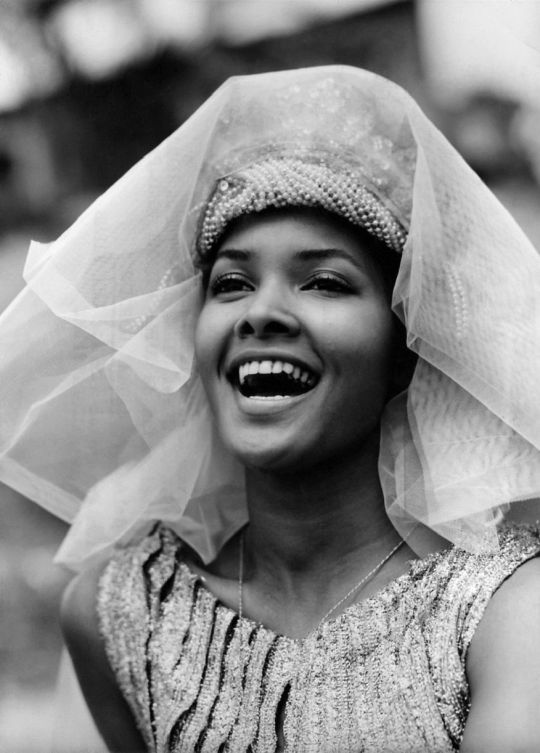


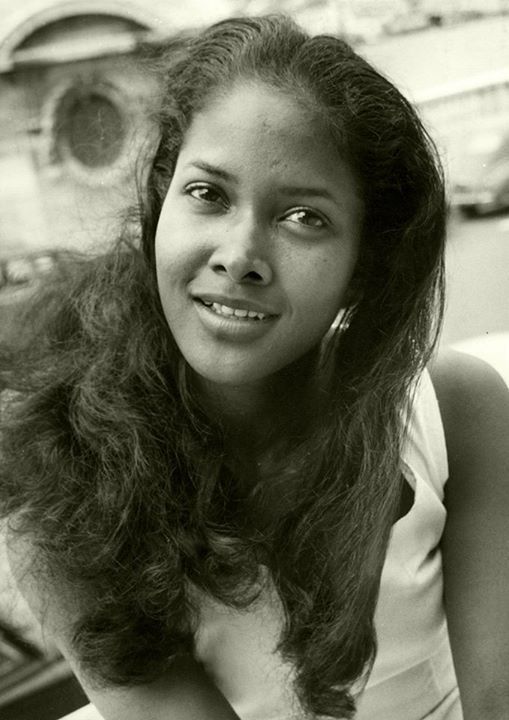
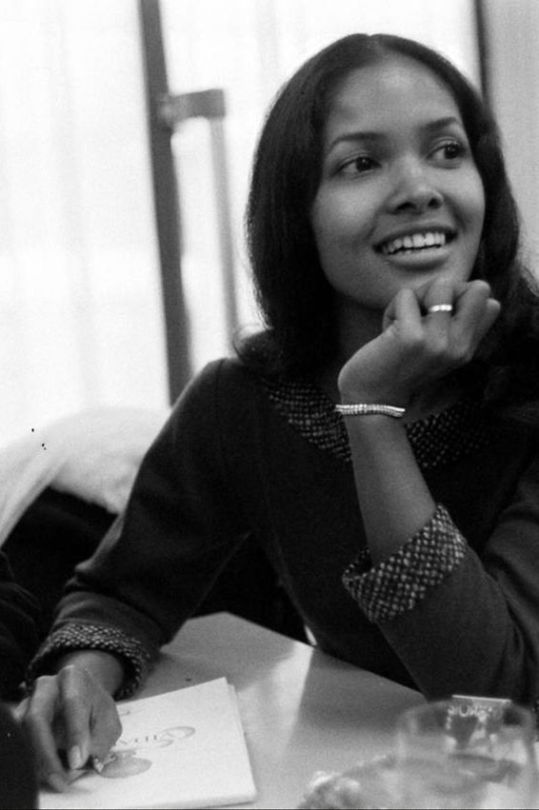

Irene Papas:

An amazing actress and singer, some may say a literal Greek goddess. Fought against military dictatorship in her home country and had an affair with Marlon Brando.
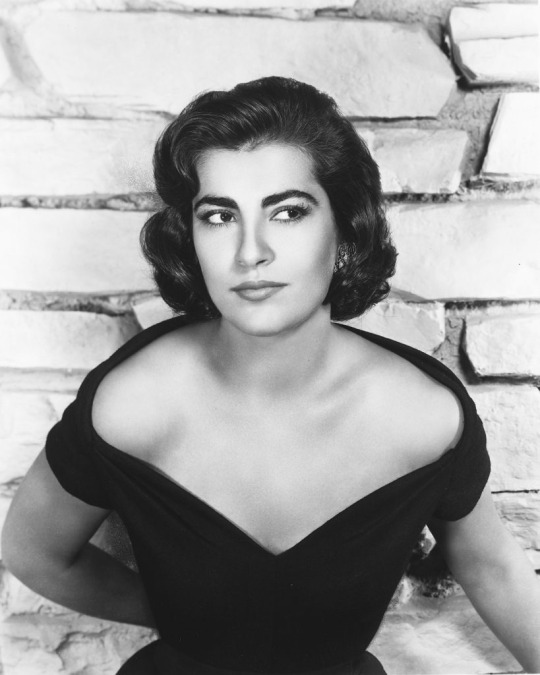
She literally played Helen, the most beautiful woman in the world in Greek mythology, what more could you want

304 notes
·
View notes
Note
The rapresentation of abusers in helluva boss is something that particularly frustrates me, Stella in particular, it seems to be done just to victimaze certain characters not to show the complex dynamics of those relationships. It seems to me the writers aren't mature enough to handle these topics properly.
Abuse: The Heart of Vivienne Medrano
Christmas 1962, a man renowned the western world over for his revolutionary approach to animation sat in a withering melancholy as he watched what could only be called a cinematic masterpiece based on a novel classic. Walt Disney, now in the twilight years of his life, saw the walls closing in and his legacy coming to a close. This man, who pioneered the animated feature film, saw his greatest accomplishment as his greatest obstacle. The man responsible for the tales brought to life of Cinderella, Snow White, Pinocchio, and Dumbo felt trapped in his achievement. “I wish,” Walt lamented, “I could make a picture like that.”
To Kill a Mockingbird was a piece that challenged its audience. The discussion of a white man defending a black man in southern America, decades before the civil rights movement. The movement that, at the time the movie hit cinemas, was in its infancy. Released during the height of the historically revisionist counter movement taking place to combat the rising push of African Americans towards their human rights. The last film Walt Disney ever saw the production of before his death in 1966 was The Jungle Book, a movie that was the epitome of “Safe” and a message that upheld the status quo of segregation.
It wasn’t until 1972 that the media of animation became raucously adult with those political and challenging concepts Disney felt were unattainable. Fritz the Cat was an X-rated animated film composed of vignettes that were unapologetically perverse, violent, and aggressively political. Critical of politicians and the police with a sympathetic if exploitative lens towards the LGBT and racial minority communities Brooklyn-based director Ralph Bakshi grew up around. Bakshi proved that animation was not strictly a child-friendly media and that adult animation could be financially and critically successful.
(For more on Ralph Bakshi's career and animation history)
If one has ever had the opportunity to listen to a Brad Bird (director of Ratatouille and The Incredibles) interview, it is clear to see that the success of Bakshi was generally quite limited. That animation is considered a genre and not a medium of art has resulted in animated films being knee-capped in the box office. There is far more potential to animation, highlighted by Howard Ashton in his collaboration with Disney studios during the Renaissance. Responsible for resurrecting the feature-length animated movie through The Little Mermaid and credited for the monumental success of Best Picture Award winner Beauty and the Beast, Ashton once said that the potential animation was ideal for musical theatre. The limitless possibilities given the medium gave the possibility of introducing Broadway to the common folk who didn’t live in New York and otherwise couldn’t afford the theater. He was quoted saying that live action musical films were “an exercise in stupidity,” highlighting the freedom that comes with a blank page.
However, the success of animation, and media in general, comes down to the message the media wishes to send. The reason the Disney Renaissance films have enjoyed their position as cornerstones of pop culture and creativity was because it did introduce the artform of musical theater into homes and made them readily accessible to everyone with an even heightened sense of fantasy that revitalized Walt’s ethos of making films for the child in everyone.
With Bakshi, it was the loud and violently political message of a revolution taking place. This continues in adult animation with the Simpsons, a series critical of hyper-capitalist America and the fallout of Reagan’s economic disaster that the effects of which are still being felt today and a satire of toxic masculinity and abusive family dynamics.
So, ultimately, the value of a piece of media is a cross between its social artistic influence and the message the creators are intending to make. While Medrano’s influence on the field of indie animation is often mischaracterized as a “pioneer”, the fact is that indie animation and pilots have existed and been funded before Spindlehorse existed. It is simply that Medrano has had the spotlight handed to her for the myth surrounding the production and subsequent success of his indie projects. Artistically, her influence can be summarized as a double-edged sword. For some, she is the motivation for inspiring artists to connect with the community to one day, hopefully, create their own work. On the other hand, she is the cautionary tale of why investing in an indie project is a financial risk for an audience member and a risk to the community as a whole that poses a real danger of making the indie sphere financially cannibalistic, as her public persona is off-putting to “normies” and her show is simply not good.
Much like Disney, the man in 1962, and Disney the company circa 2023, the revolution of animating "because you can" loses its luster very quickly. Without something profound to say, an entire company, regardless of its social influence, can fade into irrelevance despite still being "successful". The story of Disney is a cautionary tale for Indie animation as a whole and Spindlehorse in specific.
And that is the other axis on this chart. Her narrative lacks a message worth telling, and that’s very much due to her not having anything worthwhile to say.

“I really liked when things and shows and stories allow the characters to be flawed, and allow them to grow and to change. And I think that’s something that’s, you know, the world is not black and white. And I like things that explore the gray and that and the complexity, of life and mistakes and of things like that.” - Vivienne Medrano
It is not for want of mockery that I carefully transcribe Medrano’s words in her interview. To read the words aloud tells the story just as clearly as I have set out to do here. This is someone who is highly inspired by better media, who has ideas and a belief that she has something to say. But that is where the belief ends. There is no conclusion to that thought any more than there is one in the unfocused and run-on sentences she rambles along throughout the interview. She talks of “Things” without clarity, because she herself is a fundamentally incurious individual who has never once spent the time critically analyzing herself, let alone the work of others to better grasp what about it resonated with her. She merely consumes art insatiably and without any substance. Like a diet of fruit, it has a superficial veneer of positive value. Fruit would be considered healthy as it is “natural”. However, it is the nutritional equivalent of candy, lacking vital components that are necessary to sustain basic life, it is pure sugar. Her work, similarly, lacks any value of depth that would qualify as meaning.
Which comes back to what the message is in her work.
When it comes to others in the field of indie animation, Medrano does not have many friends. In response to the Lackadaisy situation, creator Tracy explained why she returned Medrano’s donation. For one, the donation was not Medrano’s money, but money she crowd sourced from her employees. While the $5k for the producer spot of the fundraiser would have not been a dent in her personal wallet, Medrano is so uninterested in supporting fellow creators while presenting an impression of camaraderie that she instead took money from the people she is in charge of the paychecks for to get her name in the credits of another creator’s work. In regards to why Medrano was declined her support, it was due to numerous individuals who had such an awful experience working for Medrano that they did not want her involvement associated with the project to any extent. When the money was returned, she made the situation extremely public and encouraged harassment by liking tweets attacking Tracy and the Iron Circus team.
A well-known member of Medrano’s crew, Hunter B, was leaked speaking crassly of other animation projects that were still in the process of production, met with support from other members in the discord. One of these creators being Ashley Nicoles from Far-Fetched. A former friend and creative partner on the Hazbin Pilot whose podcast streams featuring Edward Bosco and Michael Kovach single-handedly maintained interest in the show until the winter of 2021, free of charge. Ashley once spoke of how Medrano would speak disparagingly of an employee to her, saying that this individual was “Too unstable to work with”. Which, regardless of whether or not that is Medrano’s honest opinion, counts as defamation by an employer. It is the exact reason why most previous employers will not give a negative, detailed review of a former employee, maintaining instead to verify facts of the employment. If Erin Frost was more experienced and less involved in social media exposed culture, they could have easily sued Medrano and Spindlehorse for damaging their reputation in their field of employment.
Which circles back to Medrano’s self-assigned message of her show:
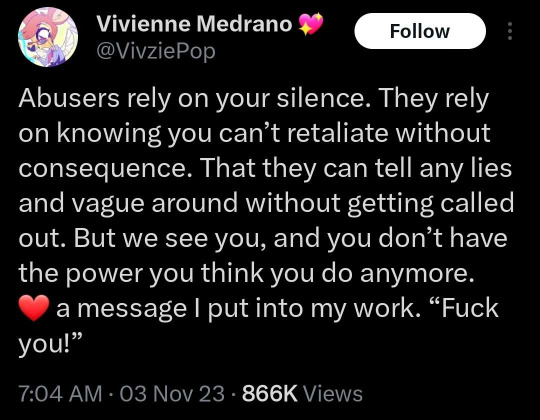
“Abusers rely on your silence. They rely on knowing you can’t retaliate without consequence. That they can tell any lies and vague around without getting called out. But we see you, and you don’t have the power you think you do anymore. A message I put into my work. “Fuck you!” - Vivienne Medrano
Medrano, who has vague and sub tweeted individuals like Lackadaisy Tracy, The Diregentlemen, Michael Kovach, and Ashley Nicoles. Medrano who has instigated and incited harassment campaigns knowing that no one can call her out without severe and relentless backlash from her cultish fanbase that she personally encourages through positive reinforcement of liking the tweets of fans. Medrano who relies on the silence of other creators in the field due to the fear of her ire collapsing their projects before they even have a chance to begin.
Vivienne Medrano with an extensive abusive history that continues to this day, has something to say about abuse.
What Medrano has to say about abuse comes from someone who has the position of superiority in all of her relationships, but feels like she’s the outcast and bullied loser. Her self insert that is repeatedly expressed in every character at one point or another is how easily they abuse those around them just because they can, but that the narrative justifies their “acting out” because they are sad. According to the National Coalition Against Domestic Violence, “An abuser externalizes the causes of their behavior. They blame their violence on circumstances.”
Indeed, the lists of abusive characteristics and traits, according to the National Coalition Against Domestic Violence, overwhelmingly encompasses the characteristics shown by characters like Loona, Blitz and Stolas that Medrano repeatedly has attempted to rationalize, justify and minimize. Which, “An abuser often denies the existence or minimizes the seriousness of the violence [including emotional and mental abuse] and its effect on the victim and other family members.”
It is not surprising, then, that the conversation of abuse in Helluva Boss is often infuriating. The narrative underplays the harm done by characters we are supposed to see as “good”. Not allowing for them to grow or change, but ignoring and minimizing the behavior, justifying it through circumstances and perpetuating the false belief that victims are not, themselves, abusers.
One of the first blog post rants I ever made about mental health and abuse was the affirmation that not all victims of abuse are survivors. I wholly stand by that. Victims of abuse perpetuate abuse. A victim and an abuser are one in the same, whereas a survivor is someone who has actually done the difficult work of being self-critical. And the one thing we all are very aware of is how much Vivienne Medrano rejects criticism.
#helluva boss critical#helluva boss criticism#helluva boss critique#vivienne medrano#vivziepop#vivziepop critical#spindlehorse critical#spindlehorse criticism#vivziepop criticism#helluva boss#perpetuating abuse#narcissistic abuse#abuse breeds abuse#essay writing
221 notes
·
View notes
Text
Evelyn Preer

Evelyn Preer (née Jarvis; July 26, 1896 – November 17, 1932), was an African American pioneering screen and stage actress, and jazz and blues singer in Hollywood during the late-1910s through the early 1930s. Preer was known within the Black community as "The First Lady of the Screen."
She was the first Black actress to earn celebrity and popularity. She appeared in ground-breaking films and stage productions, such as the first play by a black playwright to be produced on Broadway, and the first New York–style production with a black cast in California in 1928, in a revival of a play adapted from Somerset Maugham's Rain.
Evelyn Jarvis was born in Vicksburg, Mississippi, on July 26, 1896. After her father, Frank, died prematurely, she moved with her mother, Blanche, and her three other siblings to Chicago, Illinois. She completed grammar school and high school in Chicago. Her early experiences in vaudeville and "street preaching" with her mother are what jump-started her acting career. Preer married Frank Preer on January 16, 1915, in Chicago.
At the age of 23, Preer's first film role was in Oscar Micheaux's 1919 debut film The Homesteader, in which she played Orlean. Preer was promoted by Micheaux as his leading actress with a steady tour of personal appearances and a publicity campaign, she was one of the first African American women to become a star to the black community. She also acted in Micheaux's Within Our Gates (1920), in which she plays Sylvia Landry, a teacher who needs to raise money to save her school. Still from the 1919 Oscar Micheaux film Within Our Gates.
In 1920, Preer joined The Lafayette Players a theatrical stock company in Chicago that was founded in 1915 by Anita Bush, a pioneering stage and film actress known as “The Little Mother of Black Drama". Bush and her troupe toured the US to bring legitimate theatre to black audiences at a time when theaters were racially segregated by law in the South, and often by custom in the North and the interest of vaudeville was fading. The Lafayette Players brought drama to black audiences, which caused it to flourish until its end during the Great Depression.
She continued her career by starring in 19 films. Micheaux developed many of his subsequent films to showcase Preer's versatility. These included The Brute (1920), The Gunsaulus Mystery (1921), Deceit (1923), Birthright (1924), The Devil’s Disciple (1926), The Conjure Woman (1926) and The Spider's Web (1926). Preer had her talkie debut in the race musical Georgia Rose (1930). In 1931, she performed with Sylvia Sidney in the film Ladies of the Big House. Her final film performance was as Lola, a prostitute, in Josef von Sternberg's 1932 film Blonde Venus, with Cary Grant and Marlene Dietrich. Preer was lauded by both the black and white press for her ability to continually succeed in ever more challenging roles, "...her roles ran the gamut from villain to heroine an attribute that many black actresses who worked in Hollywood cinema history did not have the privilege or luxury to enjoy." Only her film by Micheaux and three shorts survive. She was known for refusing to play roles that she believed demeaned African Americans.
By the mid-1920s, Preer began garnering attention from the white press, and she began to appear in crossover films and stage parts. In 1923, she acted in the Ethiopian Art Theatre's production of The Chip Woman's Fortune by Willis Richardson. This was the first dramatic play by an African-American playwright to be produced on Broadway, and it lasted two weeks. She met her second husband, Edward Thompson, when they were both acting with the Lafayette Players in Chicago. They married February 4, 1924, in Williamson County, Tennessee. In 1926, Preer appeared on Broadway in David Belasco’s production of Lulu Belle. Preer supported and understudied Lenore Ulric in the leading role of Edward Sheldon's drama of a Harlem prostitute. She garnered acclaim in Sadie Thompson in a West Coast revival of Somerset Maugham’s play about a fallen woman.
She rejoined the Lafayette Players for that production in their first show in Los Angeles at the Lincoln Center. Under the leadership of Robert Levy, Preer and her colleagues performed in the first New York–style play featuring black players to be produced in California. That year, she also appeared in Rain, a play adapted from Maugham's short story by the same name.
Preer also sang in cabaret and musical theater where she was occasionally backed by such diverse musicians as Duke Ellington and Red Nichols early in their careers. Preer was regarded by many as the greatest actress of her time.
Developing post-childbirth complications, Preer died of pneumonia on November 17, 1932, in Los Angeles at the age of 36. Her husband continued as a popular leading man and "heavy" in numerous race films throughout the 1930s and 1940s, and died in 1960.
Their daughter Edeve Thompson converted to Catholicism as a teenager. She later entered the Sisters of St. Francis of Oldenburg, Indiana, where she became known as Sister Francesca Thompson, O.S.F., and became an academic, teaching at both Marian University in Indiana and Fordham University in New York City.
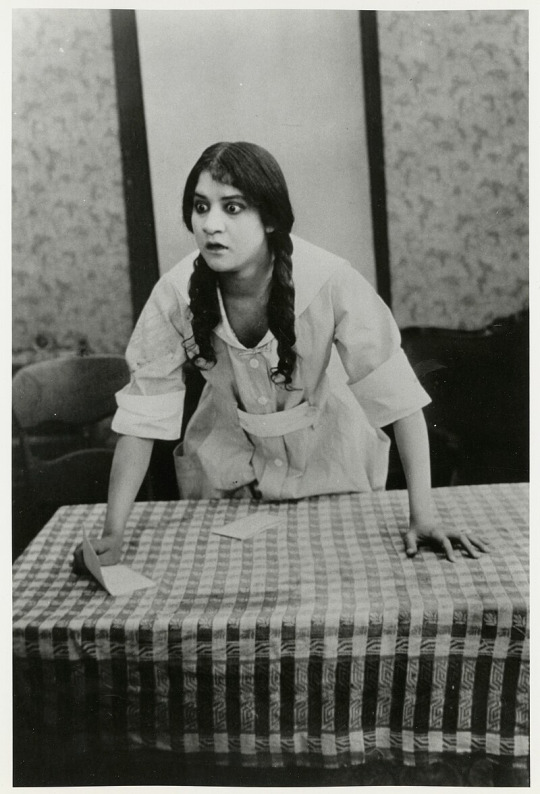
Still from the 1919 Oscar Micheaux film Within Our Gates.
60 notes
·
View notes